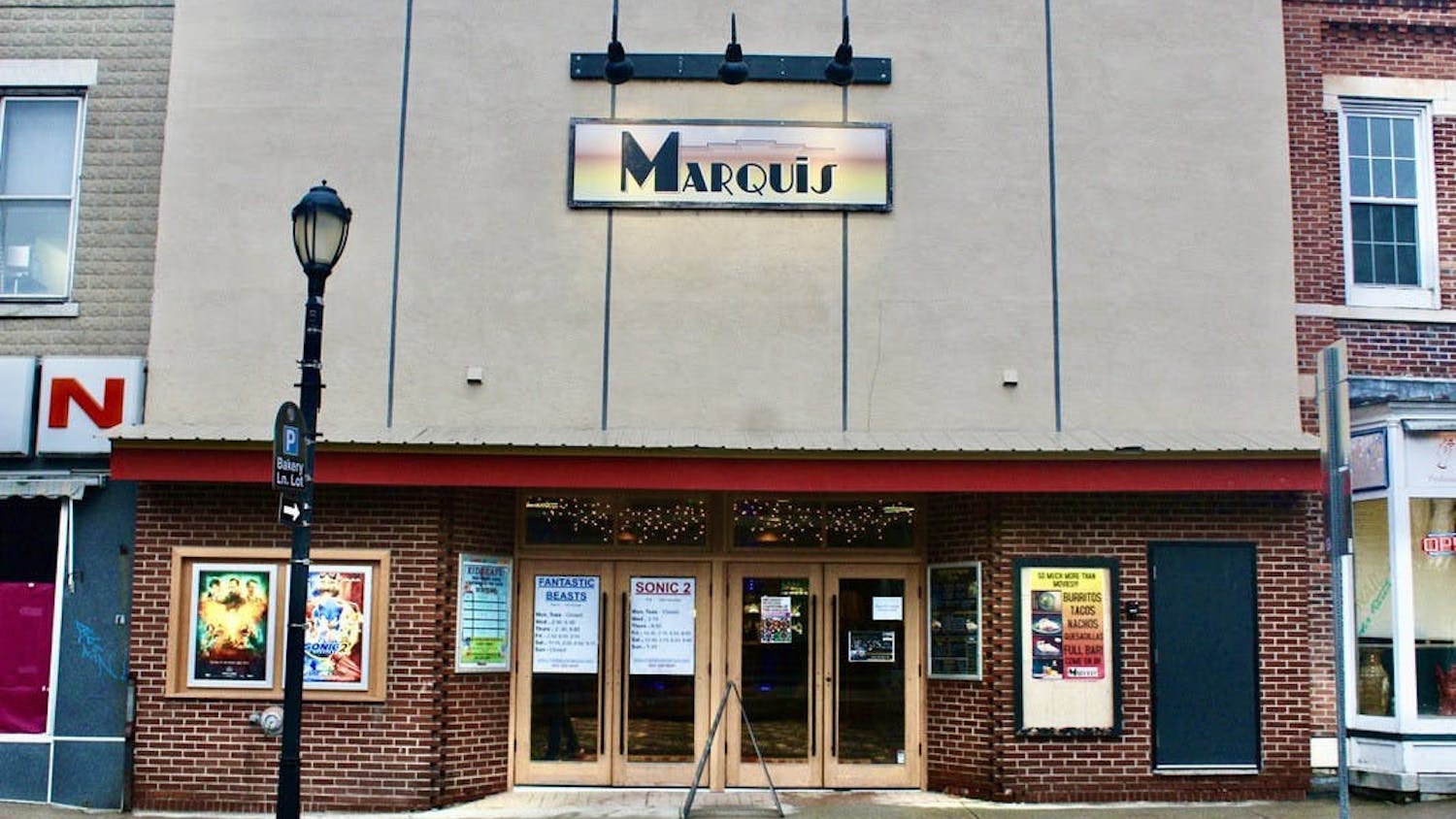Putting together the second green issue of The Campus raised the question, “Just how green is the town of Middlebury?” The College is touted for its environmental awareness and Vermont is nationally known as one of the greenest states, but how does Middlebury fit into the picture? We sought experts on the subject and found three who know a lot about the area and a lot about being green: Patti Prairie, CEO of the local environmental firm Brighter Planet; Jonathan Corcorran, president of the Addison County Relocalization Network (ACoRN); and Fred Dunnington, town planner.
— Lea Calderon-Guthe, Local News Editor
Enviornmental Awareness: Deirdre Sackett
A majority of Vermont’s towns share the same ecologically aware mindset as Middlebury’s. Yet what makes a town like Middlebury so environmentally conscious? The key to this town’s ecological awareness lies in its close-knit community, according to Brighter Planet CEO Patti Prairie.
The Middlebury-based environmental firm recently partnered with the 350 Challenge campaign, a popular and influential environmental campaign that originated at the College. Brighter Planet’s goal as part of the 350 Challenge was to receive 350 new bloggers. The company was initially insecure about the number of bloggers it would receive, but as time went on and the word spread, Brighter Planet found it had little to fear.
“We’re now over 3,500 [bloggers] in a year in a half,” said Prairie.
That’s 10 times the number the company expected.
Prairie considers it the power of the Middlebury community at work. She explained that bloggers who joined the campaign received a virtual badge that was displayed on their blogs and Web pages. Friends and family members noticed the attractive badges and, by word of mouth, discovered and joined Brighter Planet’s campaign.
“People help each other,” Prairie noted about Middlebury’s community. With such a strong following, it is evident that Middlebury as a town is concerned not only with the town’s environmentalism but also with global environmental awareness.
Prairie also noted that the College has influenced the town’s environmentalism in a positive way, especially with the newly built biomass facility that reduces the College’s carbon footprint by 40 percent.
“My sense is that [the town of Middlebury] is on the leading edge of environmentalism,” she said.
She still suggests that residents visit her company’s website, http://www.brighterplanet.com, so that they can calculate their carbon footprint and ways to reduce it.
Overall, Prairie credits the power of community and the College with making Middlebury such an environmentally conscious town.
Local Food: Lea Calderon-Guthe
Eating local foods is a simple way to go green and support the local community, especially in agriculturally rich Addison County, the area for which Middlebury is the shire town. Jonathan Corcorran cited the county’s long history of farming as an advantage for the local food movement in the area over other parts of the state with less developed farming communities, but he also said that Addison County still has a ways to go.
“I’ve heard that three to five percent of the foods purchased in Vermont are locally grown and produced, so there’s huge room for improvement, huge, and I think that’s really the bottom line,” said Corcorran.
“I would say that’s probably reflected here in Addison County — the number might be a little higher, maybe it’s seven percent, really nobody knows — but there’s definitely a committed core group of localvores here.”
With eight Community Supported Agriculture (CSA) programs that allow people to pay a discounted price for a share of a farm’s crops each season, four farmers’ markets and over half the county’s restaurants belonging to the Vermont Fresh Network, meaning they serve a certain amount of local food, Addison County residents have a lot of options in the area for eating locally. These options provide to the residents, but they also exist because community members asked for them, which might explain why Corcorran calls the area “a very interesting new model anchored by local demand.”
Corcorran showed pride in a community that “gets it,” that seems to understand the basic principles of eating local to keep money in the local economy and farms “working, productive and hopefully prosperous.” But he stressed some more abstract concepts that he wishes the wider community were more aware of.
“Food touches everybody,” said Corcorran. “It’s more than just new opportunities — it’s about changing our culture. We’re having to ask the simple question that people have always asked: ‘Where is our food going to come from?’ It’s about restoring dignity and respect to farming, and also beginning to treat the land on which we live with greater respect. We can’t farm the way we’re farming now and expect to have something in three generations. We’re going to have to reimagine what agriculture is.”
Until everyone gets the bigger picture, however, Corcorran is content to push for smaller gains.
“I’m not a 100 percent localvore, but I think it’s that we’re at three percent,” he said. “Shoot, why can’t we get to 20 percent? Why can’t we get to 25 percent? I don’t think we need to be purists about this, we just need to be sensible, and I think that’s the direction we’re moving in.”
Town Initiatives: Lea Calderon-Guthe
“Is Middlebury green? We’re trying to be,” said town planner Fred Dunnington.
Not many towns can boast their own Climate Action Plan, but the Middlebury Area Global Warming Action Coalition (MAGWAC) has been working to implement the town’s plan since 2006 with the goal of reducing town greenhouse gas emissions by at least 10 percent below 2002 levels by 2012. MAGWAC, headed up by town energy coordinator Laura Asermily, has been responsible for two campaigns, the Way to Go campaign, which promotes carbon-conscious transportation, and the Energy First campaign, which promotes energy saving and alternative energy use. From the two campaigns have sprung such initiatives as the Green Expo, in its third year in March 2010; a Local Solutions Energy Resource Directory; the Earth Day Fair; and expanded shuttle bus services from Addison County Transit Resource (ACTR). Dunnington traced the town’s green habits all the way back to the 1980s.
“There was a proposal for a hydro[electricity] project in response to the earlier oil crisis a couple decades ago,” said Dunnington. “At that time, the town said, ‘We should be energy efficient.’ [Current green initiatives]are just a new wave of this — the town has always been fairly advanced and attuned to [energy efficiency], which is only natural in a community that has a connection with an academic institution like the College that’s attuned to what’s going on in the world. We’re blessed by that.”
But where the College has a large endowment and a deep-pocketed Board of Trustees, the town is dependent on the slimmer wallets of its voters, which can limit how much the town will spend on going green.
“The problem is,” said Dunninton. “The town is stretching as hard as it can in this time of economic stress to keep a level tax rate and fund a major town improvement, the bridge, so the voters are not able to easily take on other new investment. The College is in a position to be even more advanced in its knowledge and research and its financial resources. We benefit from that and work with the College and support everything they do, and we think about how might their projects work for an organization of our scale.”
An example of the town following in the College’s footsteps is the current plan for a district biomass project that would heat Porter Hospital and municipal buildings. The town is also looking at a new pumping system that could use the heat from the 50-degree water currently expelled by the wastewater treatment facility to heat a slab in an equipment storage building.
“This is out-of-the-box stuff,” said Dunnington. “It’s not done that often, but we’re thinking about creative ways to use the infrastructure that we have. I think people in Middlebury are very receptive to alternative energy initiatives, especially if they’re demonstrated to be cost-effective.”
Just how green is Middlebury?
Comments



